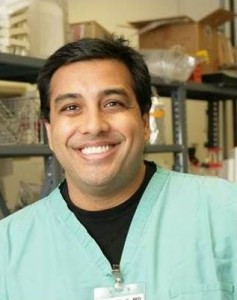FINDING CURES FOR THE INCURABLE: Decreased Government Support for Children’s Research Short Changes Kids
(A version of this post originally ran as an Opinion-Editorial piece the Buffalo News on May 29, 2016 and can be found at: http://www.buffalonews.com/opinion/viewpoints/nation-must-invest-in-scientific-research-to-cure-the-incurable-20160529)
Tomorrow’s cures will be realized only if we prioritize them today. Science is our best weapon against both emerging infectious, such as Zika virus, and chronic diseases like type 2 diabetes. Well-established environmental dangers such as lead poisoning pose a disproportionately large risk to children despite clear evidence of harm and cogent, but ignored, mitigation plans. The notion that a ounce of prevention equals more than of pound of cure has never been more applicable and underscores the imperative to accelerate research that helps doctors prevent disease or treat the sick or injured.
The Society for Pediatric Research and the American Academy of Pediatrics highlighted Seven Great Achievements in Pediatric Research last year. These breakthroughs include curing children from cancers previously considered terminal, saving the vast majority of the almost 1 in 9 babies born prematurely, and virtually eliminating HIV/AIDS transmission from mothers to infants. Immunization prevents approximately 43,000 early deaths in vaccinated U.S. children vaccinated. These achievements are the result of a long-standing, federal commitment to scientific funding to benefit children. The National Institutes of Health (NIH) budget increased steadily for over 32 years to support this work, annually increasing by 2.9%, and actually doubled between 1996 and 2004 – a time period spanning both Republican and Democratic presidencies.
Since then, funding has remained stagnant, while inflation costs for research have not, reducing the amount of scientific research that can be done. According to testimony provided by NIH Director Francis Collins, NIH has lost 22% of its purchasing power since 2003. The result is the worst climate for federally funded research in a generation. Researchers have had to cut back, close their laboratories, or find other employment opportunities, delaying the development of treatments and cures that could help people worldwide.
Young investigators have been especially affected by these financial constraints. When NIH grant applications are considered, established investigators – whose prior experience with grants and solid track-record of publications – have an advantage in obtaining renewals of existing grant funds. Young investigators who are beginning their careers must compete for an ever-limited number of NEW grant funds. This creates a disincentive for bright, enthusiastic, talented scientists to pursue a career in medical research. In a statement published by the Associated Press, Dr. Collins, commenting on young investigators, said they find themselves in the worst financial environment in half a century.
According to the American Academy of Pediatrics, the percentage of NIH principal investigators 36 and younger was approximately 3% in 2010, down from 18% in 1982 (reference? There are primary sources for this claim). Not surprisingly, the number of established investigators over the age of 66 has increased steadily over the same time span. Over the next decade the United States is at risk of relinquishing its preeminent position as the world leader in biomedical research.
Congress is finally returning to the idea that when it comes to science, you get what you pay for. Last year, it provided its largest budget increase to the NIH in twelve years, raising the funding level by $2 Billion, but not enough to cover the cost of the inflation over the past several years. In particular, dramatic constraints in NIH funding short changes children, who make up 20% of the population but to whom far less than 20% of the funding is directed. To create cures for today’s lethal diseases, a sustained, long-term commitment to science is imperative. This commitment must be immune to partisan whims, the talons of budget hawks and the election cycle.
While biomedical research has always enjoyed bipartisan support, the support is particularly strong now as many in Washington, Republican, Democrat and Independent alike, agree that NIH funding levels must continue to increase. This year, the research advocacy community is asking Congress to raise the NIH funding level to $34.5 Billion for the next fiscal year
Congress will soon vote on a budget which contains this $34.5 Billion funding level. We hope this will resume a long tradition of research support. Now more than ever, we need to invest in tomorrow’s cures. Lets replace fear with hope!
Dr. Shetal Shah, MD FAAP is Secretary and Legislative Chairman of New York State (District II), Chapter 2 (Long Island) of the American Academy of Pediatrics. The views represented are his own. Follow him on Twitter @NICUBatman

